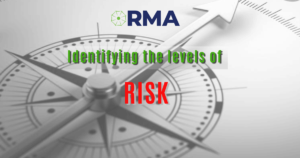
The first step in creating an effective risk-management system is to understand the qualitative distinctions among the types of risks that organizations face. Our field research shows that risks fall into one of three categories. Risk events from any category can be fatal to a company’s strategy and even to its survival.
Category I: Preventable risks.
These are internal risks, arising from within the organization, that are controllable and ought to be eliminated or avoided. Examples are the risks from employees’ and managers’ unauthorized, illegal, unethical, incorrect, or inappropriate actions and the risks from breakdowns in routine operational processes. To be sure, companies should have a zone of tolerance for defects or errors that would not cause severe damage to the enterprise and for which achieving complete avoidance would be too costly. But in general, companies should seek to eliminate these risks since they get no strategic benefits from taking them on. A rogue trader or an employee bribing a local official may produce some short-term profits for the firm, but over time such actions will diminish the company’s value.
This risk category is best managed through active prevention: monitoring operational processes and guiding people’s behaviors and decisions toward desired norms. Since considerable literature already exists on the rules-based compliance approach, we refer interested readers to the sidebar “Identifying and Managing Preventable Risks” in lieu of a full discussion of best practices here.
Category II: Strategy risks.
A company voluntarily accepts some risk in order to generate superior returns from its strategy. A bank assumes credit risk, for example, when it lends money; many companies take on risks through their research and development activities.
Strategy risks are quite different from preventable risks because they are not inherently undesirable. A strategy with high expected returns generally requires the company to take on significant risks, and managing those risks is a key driver in capturing the potential gains. BP accepted the high risks of drilling several miles below the surface of the Gulf of Mexico because of the high value of the oil and gas it hoped to extract.
Strategy risks cannot be managed through a rules-based control model. Instead, you need a risk-management system designed to reduce the probability that the assumed risks actually materialize and to improve the company’s ability to manage or contain the risk events should they occur. Such a system would not stop companies from undertaking risky ventures; to the contrary, it would enable companies to take on higher-risk, higher-reward ventures than could competitors with less effective risk management.
Category III: External risks.
Some risks arise from events outside the company and are beyond its influence or control. Sources of these risks include natural and political disasters and major macroeconomic shifts. External risks require yet another approach. Because companies cannot prevent such events from occurring, their management must focus on identification (they tend to be obvious in hindsight) and mitigation of their impact.
Companies should tailor their risk-management processes to these different categories. While a compliance-based approach is effective for managing preventable risks, it is wholly inadequate for strategy risks or external risks, which require a fundamentally different approach based on open and explicit risk discussions. That, however, is easier said than done; extensive behavioral and organizational research has shown that individuals have strong cognitive biases that discourage them from thinking about and discussing risk until it’s too late.
